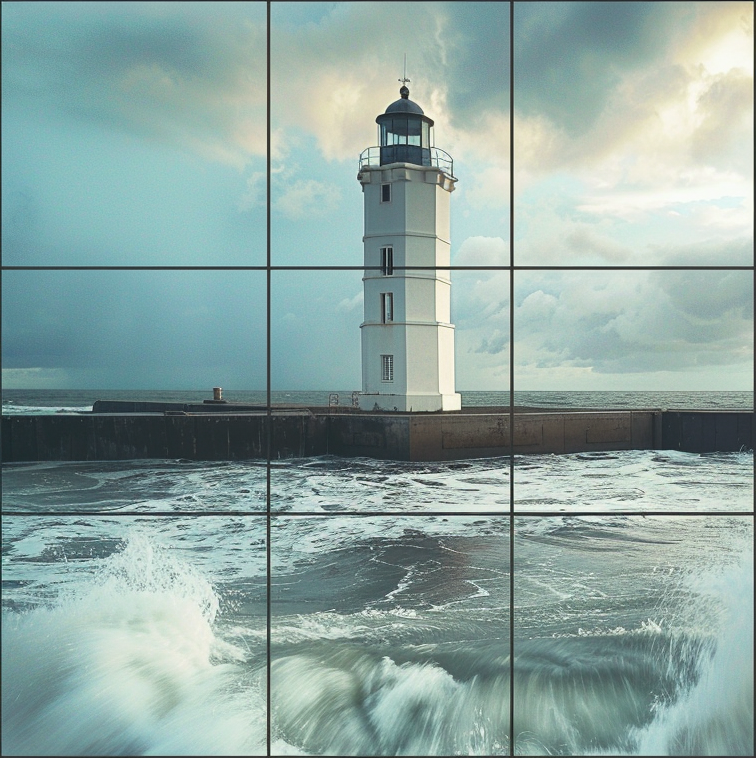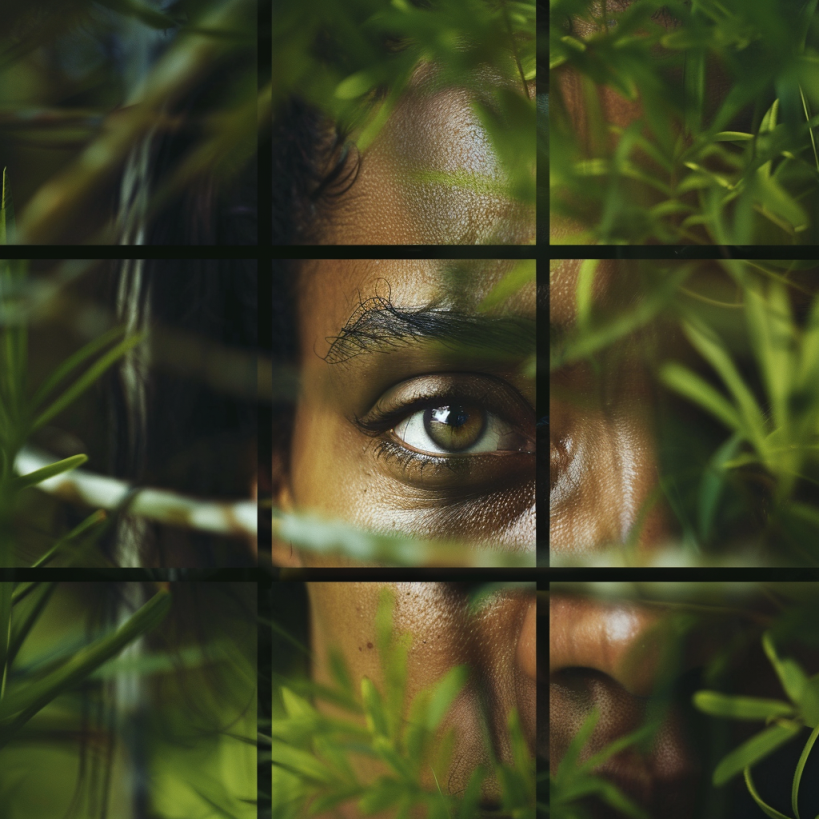Rule of Thirds in Photography and Videography
Introduction
The rule of thirds is a fundamental principle in visual composition that helps photographers and videographers create balanced and engaging images. By dividing an image into nine equal parts using two equally spaced horizontal and vertical lines, the rule of thirds suggests placing key elements along these lines or their intersections. This technique draws the viewer’s eye to important parts of the scene, enhancing the overall visual impact.
The significance of the rule of thirds lies in its ability to create a sense of harmony and balance in a composition. It prevents the subject from being centered, which can often result in static and less interesting images. Instead, the rule of thirds encourages dynamic placement, leading to more natural and aesthetically pleasing visuals.
Widely used in both photography and videography, the rule of thirds is a go-to guideline for amateurs and professionals alike. Whether capturing landscapes, portraits, or action shots, applying this rule can transform an ordinary composition into a compelling one. By understanding and utilizing the rule of thirds, you can elevate your visual storytelling and create more impactful images.
What is the Rule of Thirds?
The rule of thirds is a composition guideline that helps create visually appealing and balanced images by using a grid-based layout. This grid divides an image into nine equal parts by two equally spaced horizontal lines and two equally spaced vertical lines. The key idea is to place important elements of the scene along these lines or at their intersections, rather than in the center of the frame.
Grid-Based Layout:
- Imagine overlaying your image with a grid of two horizontal lines and two vertical lines, creating nine equal rectangles.
- The intersections of these lines are known as power points or focal points, where the viewer’s eye is naturally drawn.
Dividing the Image:
- The grid divides the image into nine equal parts, providing a guideline for placing subjects and elements in the composition.
- This division helps to avoid a static, centered composition, encouraging a more dynamic and interesting layout.
Visual Impact:
- Placing subjects along the grid lines or at intersections enhances the balance and harmony of the image.
- Elements positioned at these points draw the viewer’s attention and create a natural flow through the image.
- For example, in a landscape photo, placing the horizon along the top or bottom third line adds depth and interest, while positioning a focal point, like a tree or a building, at one of the intersections makes the composition more engaging.
By using the rule of thirds, photographers and videographers can create more dynamic and visually pleasing compositions that guide the viewer’s eye to the most important parts of the scene. This simple yet powerful technique can transform an ordinary image into an extraordinary one.

Why is the Rule of Thirds Important?
The rule of thirds is a vital tool in the world of visual composition, offering numerous benefits that can greatly enhance the quality of your images. Here are some key reasons why the rule of thirds is important:
Enhance Visual Balance and Harmony: The rule of thirds helps create a sense of balance in your composition. By placing important elements along the grid lines or at their intersections, you avoid the monotony of centered compositions. This balance adds a natural harmony to your image, making it more pleasing to the eye.
Create More Engaging and Dynamic Compositions: A composition that adheres to the rule of thirds is often more dynamic and interesting. It encourages the viewer’s eye to move around the frame, exploring different elements rather than fixating on the center. This movement adds a sense of energy and engagement to your images, making them more compelling.
Guide the Viewer’s Eye to the Most Important Elements of the Scene: By positioning key subjects along the grid lines or at intersections, you can effectively guide the viewer’s eye to the most important parts of the scene. This technique helps emphasize the focal points of your composition, ensuring that the viewer’s attention is drawn to the intended areas.
Increase Aesthetic Appeal by Following a Time-Tested Principle: The rule of thirds is a time-tested principle that has been used by artists for centuries. Its effectiveness in creating aesthetically pleasing compositions is well-documented. By applying this rule, you can leverage a proven technique to enhance the visual appeal of your work, whether you are photographing landscapes, portraits, or any other subject.
How to Apply the Rule of Thirds
In Photography:
Use the Grid Overlay Function on Cameras or Smartphones: Most modern cameras and smartphones come with a grid overlay feature that divides the screen into nine equal parts. Enable this feature in your camera settings to make it easier to compose your shots following the rule of thirds.
Position Key Elements Along the Grid Lines and Intersections: When framing your shot, place important elements such as the main subject, horizon, or points of interest along the grid lines or at their intersections. For instance, in a portrait, align the subject’s eyes with the top horizontal line, and position their face at the intersection of a vertical and horizontal line.
Adjust Framing and Composition to Adhere to the Rule: Take a moment to adjust your framing and composition to align with the rule of thirds. This might involve moving the camera slightly to the left or right, up or down, or zooming in or out to ensure that key elements are positioned along the grid lines or intersections. Experiment with different compositions to see what works best for your subject and scene.

In Videography:
Apply the Rule of Thirds in Framing and Shooting Scenes: Just like in photography, use the rule of thirds to frame your shots in videography. Position important elements such as subjects, horizon lines, and focal points along the grid lines or intersections to create visually balanced and engaging scenes.
Use the Grid Overlay Feature in Video Cameras or Editing Software: Many video cameras and editing software offer a grid overlay feature. Enable this feature to help guide your framing during shooting and editing. This will ensure that your compositions adhere to the rule of thirds throughout the filming process.
Ensure Subjects Are Positioned to Create Balanced and Engaging Shots: When shooting a video, pay attention to the positioning of subjects within the frame. For interviews or talking head shots, place the subject’s eyes along the top horizontal line and their body at one of the vertical intersections. For action scenes, position moving subjects so that they have space to move into, creating a sense of direction and flow within the frame.
Tips for Mastering the Rule of Thirds
Practice Regularly to Develop an Intuitive Sense of Composition: The best way to master the rule of thirds is through consistent practice. By regularly composing your shots with the grid in mind, you will start to develop an intuitive sense for where to place key elements. Over time, this will become second nature, and you’ll be able to apply the rule effortlessly.
Experiment with Different Subjects and Scenes: Don’t limit yourself to just one type of photography or videography. Experiment with various subjects and scenes, such as landscapes, portraits, action shots, and still life. This will help you understand how the rule of thirds can be applied in different contexts and how it can enhance a wide range of compositions.
Combine the Rule of Thirds with Other Composition Techniques: While the rule of thirds is a powerful tool, it’s not the only composition technique available. Combine it with other principles, such as leading lines, symmetry, and framing, to create even more compelling images. Understanding how different techniques work together will give you greater creative flexibility.
Understand When to Break the Rule for Creative Effect: Rules are made to be broken, and the rule of thirds is no exception. Once you have a solid understanding of how it works, don’t be afraid to break it for creative effect. Sometimes, centering your subject or using unconventional compositions can create a stronger visual impact. The key is to know why you’re breaking the rule and what effect you’re trying to achieve.
Use Post-Processing Tools to Fine-Tune Your Composition: Even if you didn’t get the composition perfect in-camera, you can use post-processing tools to crop and adjust your image to better align with the rule of thirds. Most photo and video editing software includes grid overlays that can help you refine your composition during editing.
Study and Analyze Other Photographers’ and Videographers’ Work: Look at the work of other photographers and videographers to see how they use the rule of thirds. Analyze their compositions and try to understand why certain placements work. This will help you gain new insights and ideas for your own work.
Conclusion
The rule of thirds is a simple yet powerful technique that can significantly enhance your visual compositions. By dividing your image into nine equal parts and strategically placing key elements along the grid lines and intersections, you can create balanced, engaging, and aesthetically pleasing images.
We encourage you to practice this technique regularly, experiment with different subjects and scenes, and combine it with other composition principles. Remember, while the rule of thirds is a valuable guideline, don’t be afraid to break it for creative purposes when the situation calls for it.

